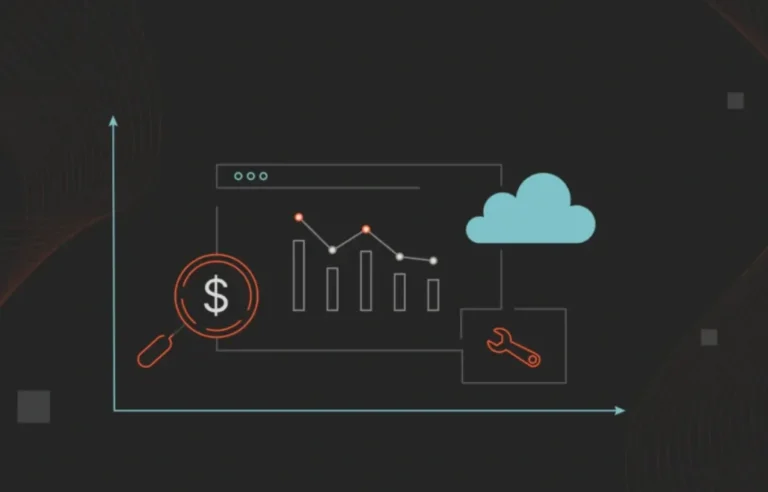Key Takeaways
- Understanding the importance of proactive cloud monitoring.
- Essential tools and techniques for effective cloud monitoring.
- The role of automation and machine learning in cloud monitoring.
- Best practices and real-world examples to ensure optimal cloud performance.
The Importance of Proactive Cloud Monitoring
In the fast-paced world of technology, proactive cloud monitoring has become indispensable. Organizations can ensure continuous service availability and performance by preemptively identifying and resolving issues. A robust hybrid cloud monitoring system is crucial for quickly and efficiently addressing potential disruptions. According to ITProPortal, monitoring helps address problems before they escalate, saving time and resources.
Proper cloud monitoring ensures that businesses avoid downtime, which can be costly and damaging to the company’s reputation. Industries such as finance, healthcare, and e-commerce rely heavily on cloud services, and monitoring these services proactively allows for swift action against potential issues. This helps maintain service levels and bolsters customer trust, vital for staying competitive in today’s market.
Furthermore, proactive cloud monitoring can provide valuable insights into system performance and user behavior. These insights can be used to optimize system performance, improve user experience, and even drive business decisions. Organizations can transform data into actionable intelligence with the right monitoring tools and strategies, increasing efficiency and better resource management.
Essential Tools and Techniques for Effective Cloud Monitoring
Effective cloud monitoring requires tools and techniques tailored to address different facets of the cloud environment. Popular choices include infrastructure monitoring tools, log analysis systems, and network performance monitors. Each tool serves a distinct purpose and complements others to provide comprehensive insights into various aspects of your cloud environment.
Infrastructure monitoring tools are vital for monitoring the performance and availability of hardware resources. These tools alert IT teams to potential hardware failures or performance bottlenecks, allowing for prompt resolution. Log analysis systems analyze log data from applications and infrastructure to detect anomalies, security threats, and operational issues.
Network performance monitors help ensure network issues do not affect cloud performance. These tools monitor network traffic, identify congestion points, and provide analytics to optimize network performance.
Combining these tools into a cohesive monitoring strategy gives IT teams a holistic view of the cloud environment. This comprehensive approach ensures that every aspect of the cloud, from infrastructure to applications, is monitored and optimized, enhancing performance and reliability.
The Role of Automation and Machine Learning
Automation and machine learning are revolutionizing cloud monitoring. Automated scripts can handle routine tasks, such as generating reports, updating configurations, and responding to alerts without human intervention. This frees IT staff to focus on more strategic tasks and minimizes the risk of human error.
Machine learning algorithms bring an added layer of sophistication to cloud monitoring. They can analyze vast amounts of data to identify patterns and predict potential issues before they occur. This predictive capability is invaluable for maintaining optimal performance and avoiding unexpected downtime. Machine learning models can forecast traffic spikes, detect anomalies, and suggest preventive measures by analyzing trends and historical data.
The synergy between automation and machine learning enhances the accuracy and efficiency of cloud monitoring processes. Organizations can benefit from faster response times, improved reliability, and greater operational efficiency. As these technologies evolve, their integration into cloud monitoring strategies will become vital for maintaining robust and resilient cloud environments.
Best Practices in Cloud Monitoring
- Implement multi-layered monitoring to cover all aspects of the cloud environment, from infrastructure to applications.
- Integrate with alert systems for immediate response to potential issues, ensuring that disruptions are addressed promptly.
- Regularly update and maintain your monitoring tools to keep up with the latest advancements and security patches.
- Utilize dashboards for real-time data visualization and quick status assessments, enabling IT teams to monitor performance at a glance.
- Ensure compliance with industry standards and regulations, mitigating risks and maintaining the integrity of your cloud environment.
Following these best practices can help organizations maintain a robust and responsive cloud monitoring framework. Consistent monitoring and evaluations are key to sustaining performance and security, leading to better decision-making and resource management. Organizations prioritizing proactive monitoring are better positioned to handle the dynamic nature of cloud environments and deliver consistent, reliable services to their users.
Real-World Examples of Effective Cloud Monitoring
Several companies have effectively utilized cloud monitoring to optimize their operations. For instance, a global retail company implemented comprehensive monitoring solutions to achieve a 99.99% uptime, demonstrating the critical importance of these strategies in maintaining operational continuity. By integrating multiple monitoring tools and leveraging automation, the company was able to detect and resolve issues swiftly, ensuring a seamless shopping experience for its customers.
Similarly, a leading financial institution used automated monitoring and machine learning to detect fraudulent activities and prevent security breaches. The institution’s proactive approach to monitoring enabled it to identify suspicious patterns and take preventive measures before any damage occurred. This protected the institution from financial losses and safeguarded its customers’ sensitive information.
Adopting cloud monitoring tools and practices across different industries showcases the versatility and necessity of these solutions. Whether it’s ensuring uptime, preventing security threats, or optimizing resource usage, proactive cloud monitoring is key to achieving these goals. These real-world examples highlight how robust monitoring practices can improve performance, enhance security, and greater customer satisfaction.
Conclusion
Proactive cloud monitoring is essential for maintaining optimal performance and availability in today’s fast-paced, technology-driven world. By leveraging the right tools, techniques, and best practices, organizations can ensure their cloud environments run smoothly, minimizing disruptions and enhancing overall efficiency. Effective cloud monitoring is a technical necessity and a strategic advantage in a landscape where downtime and performance issues can have significant repercussions.
Implementing robust monitoring solutions enables businesses to avoid potential issues, ensuring consistent and reliable cloud service delivery. Organizations prioritizing proactive cloud monitoring are better equipped to adapt to changes, optimize their resources, and deliver exceptional services to their users, ultimately driving business success.
